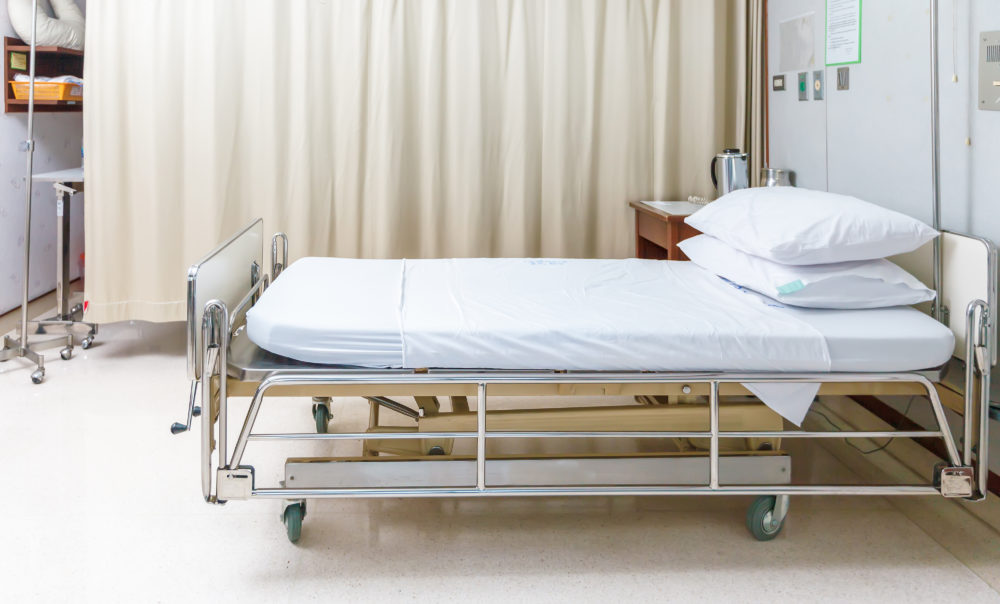Deadly Hospital Fungal Infections May Be Spreading in U.S., CDC Warns

Federal health officials warn that a deadly fungal infection risk has emerged in U.S. hospitals, with at least a dozen people infected and four who may have been killed by the drug-resistant strain.
The fungal infection Candida auris has been reported in the United States, according to a press release issued by the U.S. Centers of Disease Control and Prevention (CDC) last week, which suggests that more infections may be on the way.
The CDC identified seven cases which occurred from May 2013 and August 2016, focusing on the cases in a recent Morbidity and Mortality Weekly Report. An additional six cases occurred after the time frame of the CDC report and are still being investigated.

Do You Know About...
Childhood Diabetes Lawsuits Against Junk Food Industry
Lawyers are now pursuing financial compensation for families of children diagnosed with Type II diabetes, fatty liver disease and other chronic illnesses caused by addictive and harmful substances in ultra-processed foods.
Candida auris is a serious and sometimes fatal fungal infection, which is often resistant to anti-fungal drugs and are typically hospital acquired infections. These are the first cases identified in the United States.
In June 2016, the CDC issued a clinical alert describing the global emergence of Candida auris. The agency called on laboratories across the nation to report Candida auris and send patient samples to state and local health departments, as well as to the CDC.
Among the seven investigated cases of Candida auris, patients were infected in four states, including New York, Illinois, Maryland, and New Jersey. Officials indicate all patients had serious underlying medical conditions and were hospitalized an average of 18 days when the fungal infection was identified.
Four of the patients died. Officials say it is unclear whether the deaths were caused by Candida auris or were due to other underlying health conditions.
In two cases, two patients treated in the same hospital or healthcare facility had nearly identical fungal strains. This suggests the fungal infection may be easily spread in a healthcare setting. Six of the seven patients were identified through a retrospective review of hospital and lab records.
“It appears that C. auris arrived in the United States only in the past few years,” said Tom Chiller, M.D., M.P.H., chief of CDC’s Mycotic Diseases Branch. “We’re working hard with partners to better understand this fungus and how it spreads so we can improve infection control recommendations and help protect people.”
Researchers say Candida auris can easily be misidentified as another type of candida infection. This may result in many patients receiving ineffective treatment. The majority of the patients highlighted in the report were initially misdiagnosed with another species of candida.
The Global Superbug Threat
The CDC issued a report in 2013, indicating antibiotic-resistant infections are being increasingly seen in hospital patients across the U.S. The CDC called on hospitals to take immediate steps to stop the spread of drug resistant superbugs.
Another study published in 2016 indicated 1 in 7 hospital-acquired infections are now antibiotic resistant, indicating the superbug problem is spreading.
Overall, 71% of Candida auris strains from the U.S. are resistant to drugs used to treat the infection. Samples of Candida auris from other countries indicate they are also resistant to the three major classes of anti-fungal medications. None of the U.S. strains in this report were resistant to all three anti-fungal drug classes.
Lab testing indicated the U.S. strains were related to strains from South Asia and South America. However, none of the patients had traveled to South Asia or South America or had direct links to those regions.
The CDC recommends healthcare facilities implement strict standards to control the spread of Candida auris. They call on hospitals to thoroughly clean Candida auris patient rooms daily and after discharge, specifically with disinfectant approved by the Environmental Protection Agency for use against fungi.
The CDC is also expanding its tracking of the fungus through the Emerging Infections Program. A British report published in 2014 indicated more than 10 million people will die from antibiotic-resistant infections every year by the year 2050.
“We need to act now to better understand, contain and stop the spread of this drug-resistant fungus,” said CDC Director Tom Frieden, M.D., M.P.H. “This is an emerging threat, and we need to protect vulnerable patients and others.”
1 Comments






WesleyJanuary 19, 2017 at 11:50 am
August 17 2016 I had a total knee replacement at Mary Greeley Hospital in Ames,Iowa. I left the hospital with a fungal knee infection and a Bladder infection. The Doctor that did the surgery told me to use a anti -itch cream on the knee. After using the anti-itch cream for a month with no results and the fungus spreading I was sent to the Infectious Diease Doctor. The Infectious Diease Doctor had [Show More]August 17 2016 I had a total knee replacement at Mary Greeley Hospital in Ames,Iowa. I left the hospital with a fungal knee infection and a Bladder infection. The Doctor that did the surgery told me to use a anti -itch cream on the knee. After using the anti-itch cream for a month with no results and the fungus spreading I was sent to the Infectious Diease Doctor. The Infectious Diease Doctor had me use a Clotrimazole cream on my knee. He also prescribed for me a pill that was suppose to keep the fungus from spreading, it did the oppisite, it spresd to my arms and face. The infectious Diease Doctor then a skin calmng cream for the arms and a 2 1/2 hydrocortisone cream for my face.My face cleared up but the rash came back on my arms, It had never cleared up. I now have an appointment with a Dermotoligist. My Bladder infection I seen the Doctor and he prescribed some antibotics , after taking them as prescribed I woke up early one moring deathly sick and had to be taked to the ER where it was determined te the Doctor had given me the wrong prescription. That has healed but I have seen the Urologist and have to see him next December.because of prostrate trouble.